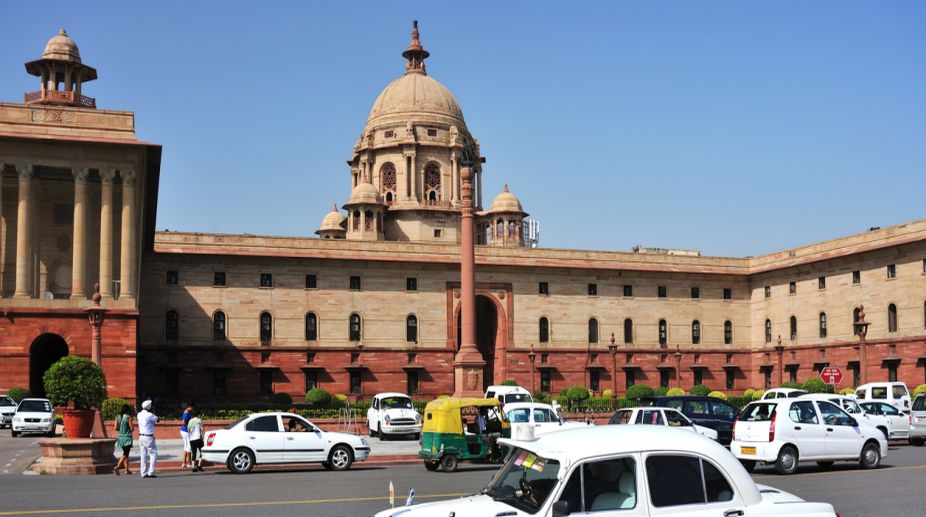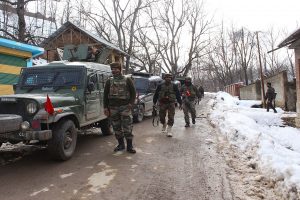In his two-part article, “Lateral intrusion” (8-9 September), Ashok Kapur seeks to thwart the entry of any outsider, other than the IAS, “for ‘prize’ positions of prestige and authority” in the government. Convinced as he is that the IAS alone is “trained and experienced exclusively for senior positions in the government”, he appears to be out of step with the times.
He chooses to ignore with disdain the concerted appeal made over the past 60 years by some distinguished members of the ICS and IAS as well as Administrative Reform Commissions, Pay Commissions and expert bodies of the vast potential gains of inducting appropriate officers from amongst various services and technocrats, professionals and entrepreneurs from outside into higher administrative echelons.
Advertisement
India has persisted with an old, colonial bureaucratic structure ~ obese and parasitical, producing a thicket of red tape, the civil service emerging as a corps d’ elite, the new class, “privileged persons divorced from the people and standing above the people”. The administration has been the Achilles’ heel, impeding the country’s ability to deliver.
The IAS, on the pattern of the ICS, has been in the vanguard. As viewed by Jawaharlal Nehru the ICS had some outstanding individuals, but it was “a symbol of inequality, casteism and amateurish dilettantism in our administration”. While the tasks it faces are those of the 21st century, the IAS continues to be fundamentally based on the old concept of the ‘amateur’, ‘all-rounder’, or ‘generalist’. This is clearly antithetical to public administration. The system is particularly fragile at the higher levels, bereft of leadership within. Chaucer said centuries ago, “If gold shall rust, what will iron do”?
A century ago, the government’s tasks were mainly passive and regulatory. Now it is engaged in a far more active and positive engagement in public affairs ~ location of a new airport, buying military supplies, pre-empting the looming scourge of climate change, fostering the brave new world of digital revolution, striking new energy policy.
These tasks call for civil servants to use new techniques of analysis, management and coordination. The Government’s overtures to unshackle the economy from regulations and controls demand a structural, indeed surgical, transformation in its instruments of governance. Law and order itself has become a critical management problem and it has a distant relation with development. Tribal, Dalit and gender politics have led to a development crisis.
Compared to the past, public administration and Parliament need greater foresight in matters of land development, the transport system and other resources. India’s post-1991 economic liberalization policy placed the civil service in a new trajectory, accelerating its pace of change and calling for necessary adjustments.
Senior civil servants are called upon to negotiate with multinational corporations, testing their communication skills, and knowledge of international economics and trade. The new compulsions call for a departure from the prevalent generalist culture of the civil service.
A key challenge is that specialists continue to be underrepresented and under-valued at all levels of government. It was the specialist knowledge of the chief veterinary officer that made him ~ and not the secretary of state or permanent secretary ~ the most trusted source of advice during the foot-andmouth crisis in 2001.
Civil servants today need to keep pace with the rapid expansion of knowledge and they need to acquire new techniques to apply the same. The Civil Service needs to be staffed by men and women who are truly professional, with two main attributes ~ one, the job-skill from training and sustained experience; second, the fundamental knowledge of a particular subject. A generalist is one who is aware of the technique and processes involved in a factory or a technical undertaking or in administration, but he is not an expert. A specialist or an expert is a man whose special training makes him an authority in a particular field. The use of the specialist in government finds its most vigorous expression in the American Civil Service.
The skills needed to administer a vast continent, to develop its natural resources, to promote social and economic growth were specialised skills. The specialists in the British system have made some notable gains in science agencies, in public enterprises and in the welfare agencies. In the US, a generalist service recruited by competitive examination and known as the Junior Management Service has been created. The government in the UK encourages departments and agencies to advertise for posts at all levels, including the most senior.
There is also a substantial degree of exchanges from and to the Civil Service, interchange of staff between departments and between the departments and agencies. The British bureaucratic structure, which India has followed, is in tune with the Fulton Committee’s denunciation of “the cult of the generalist” based on the Northcote-Trevelyn and Macaulay reports.
It has introduced important innovations in the civil service ~ executive agencies for specific services like prisons, coast guard, passport offices, which function as corporate business entities, each under a CEO (many of them from the private sector) responsible to the Minister. Examples abound in India of the system producing a nonexpert minister assisted usually by a non-expert secretary to whom a non-expert head of department is adviser.
Senior engineers or other experts are called upon to brief civil servants about the intricacies of the work and in writing minutes on simple technical matters. Dr KL Rao, while analysing the administrative working of the DVC, found that non-technical administrators remained at the top rung of the project; there was no chief engineer for years; foreign consultants were brought in to advise the non-technical administrators at the top. As Cabinet Secretary, B.G. Deshmukh pleaded that “appointing people from outside at senior levels on contract basis would be invigorating for the civil service as a whole”. Indeed, an optimal share of generalists and specialists in India’s civil service has been advocated for over sixty years.
Realising the crucial need for senior specialist officers to steer the government’s economic agenda, the Central Administrative Pool was put in place in 1957 for building up a reserve of officers with special experience of economic administration. Pretty soon it was reduced to irrelevance. An Administrative Reforms Commission was set up in November 1965. It recommended that all competent Class I officers from all services should have access to middle and senior management posts in the Secretariat, that preference for the generalist be replaced by a preference for those who have acquired competence in the field concerned.
The ARC-I spelt out eight fields of specialization ~ economic, industrial, agricultural and rural development, social and educational administration, personnel, financial, defence and internal security, and planning. It emphasised that specialization in skills and knowledge be built up in the services by allowing persons to continue in particular areas or fields of administration for a minimum period of 8-10 years.
The Surendra Nath Committee, 2003 likewise stressed the importance of providing “domain expertise”. It carved out eleven domains for officers under the Central Staffing Scheme. It envisaged that officers may be assigned a maximum of three domains.
The assignment of domains could be integral to the empanelment process at Joint Secretary/Additional Secretary levels.
(The writer is Senior Fellow, Asian Institute of Transport Development, and former CMD, Container Corporation of India)
(To be concluded)











